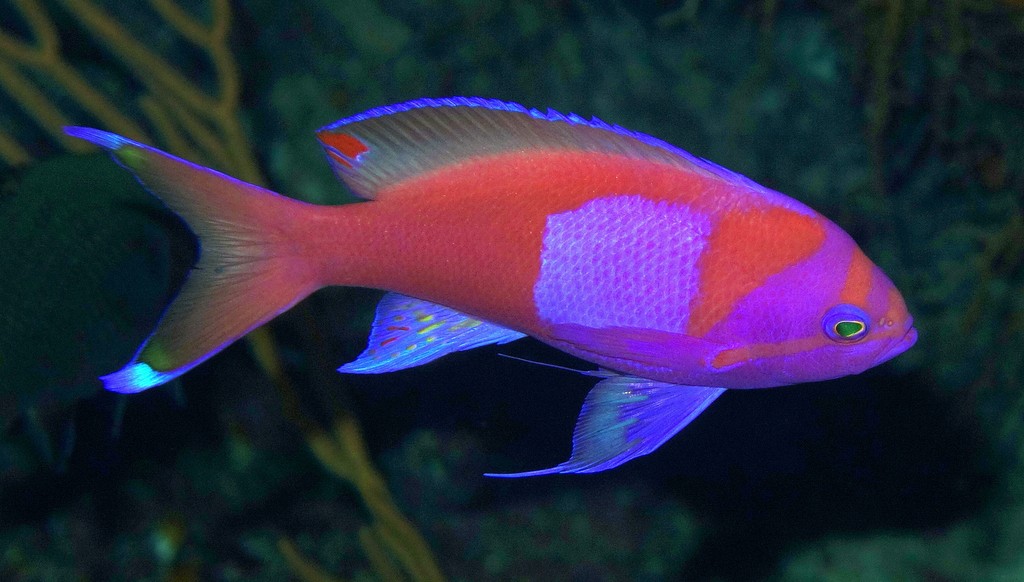PSEUDANTHIAS PLEUROTAENIA - (BLEEKER, 1857)
Picture courtesy of: Alain Daoulas
Anthias à tache carrée, Blotched fairy basslet, Mirror basslet, Square-spot fairy basslet, Squarespot anthias, Kantplettet svalehalebars, Sumirenagahanadai, スミレナガハナダイ, 侧带拟花鮨, 側帶花鮨,
Synonyme
Anthias pleurotaenia (Bleeker, 1857)
------------------------
Description
Dorsal spines (total): 10; Dorsal soft rays (total): 16-18; Anal spines: 3; Anal soft rays: 6-7; Pectoral fin rays: 17-19; Lateral line scales: 45-50; Body depth: 2.4-2.7 in SL. No papillae on edge of orbit; Margin of subopercle and interopercle weakly serrate; Third dorsal spine prolonged; Caudal fin lunate; Pelvic fins reaching to or beyond origin of anal fin. Max. length: 20.0 cm TL. Depth range: 10 - 180 m, usually: 10 - 25 m.
Color
Females and juveniles are yellowish with orange scale margins and two purplish stripes from the eye along the lower part of the body to the tail base.
Males are deep pink and orange with a large almost square purplish blotch on the side, a red tip on the rear of the dorsal fin, mauve tips on the caudal fin and a reddish stripe from the snout, through the eye, across the pectoral-fin base to the tail base.
Etymology
Pseudanthias: from Greek, pseudes = false + from Greek, anthias = a name of an unknow fish given by Aristotle in "History of Animals". This book, written in the fourth century BC, is one of the major texts on biology by the ancient Greek philosopher Aristotle (384–322 BC), who had studied at Plato's Academy in Athens.
pleurotaenia: from Latin, pleuro- = to the side, lateral + from Latin, taenia = ribon, band. Referring to the two purplish stripes from the eye along the lower part of the body to the tail base of the female.
Original description: Anthias pleurotaenia (Bleeker, 1857) - Type locality: Ambon Island, Molucca Islands, Indonesia.
Distribution
Western Pacific and southeastern Indian Ocean: Indonesia east to Marshall Islands and Samoa, north to Ryukyu Islands (Japan), south to northern Australia and New Caledonia.
Biology
Aggregations of this species occur a few meters above the edges of current-swept drop-offs. Females and males in separate aggregations or mixed sexes. Juveniles solitary and remain close to shelter. Seldom encountered in the aquarium trade.
Similar species
- Pseudanthias bimaculatus (Smith, 1955) - Reported from Indo-West Pacific: East Africa, Aldabra, Madagascar, Réunion (Mascarenes), Maldives, Indonesia, New Caledonia (Report from New Caledonia must be confirmed); Probably more widespread.
- Pseudanthias squamipinnis (Peters, 1855) - Reported from New Caledonia - Link to the species (here). Females are similar.
- Pseudanthias sheni (Randall & Allen, 1989) - Reported Eastern Indian Ocean: Western Australia (Rowley Shoals, Scott Reef). Yellow or orange band from the eye to the pectoral-fin base.
Last update: 3, September 2022
